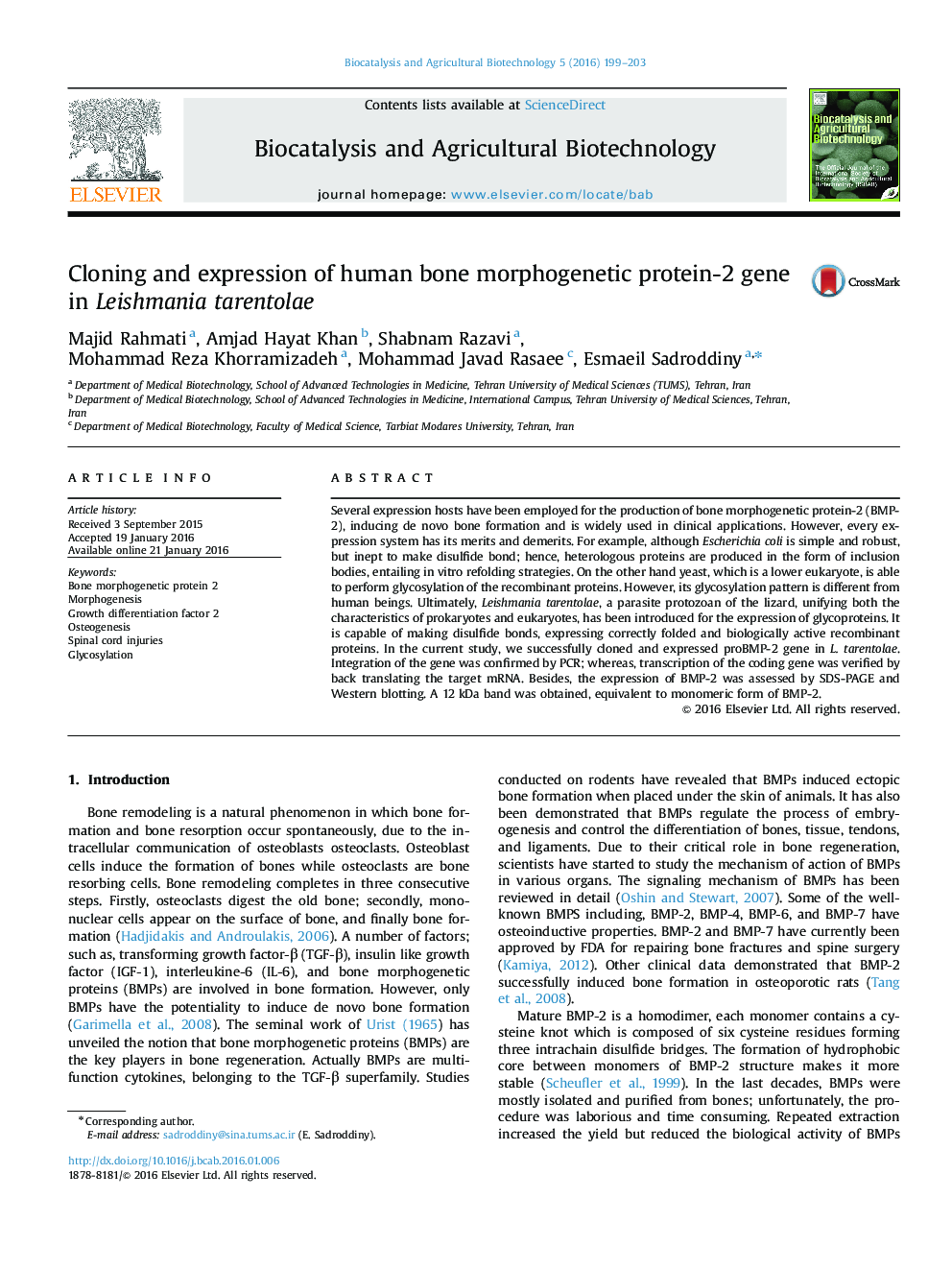| Article ID | Journal | Published Year | Pages | File Type |
|---|---|---|---|---|
| 2075363 | Biocatalysis and Agricultural Biotechnology | 2016 | 5 Pages |
Several expression hosts have been employed for the production of bone morphogenetic protein-2 (BMP-2), inducing de novo bone formation and is widely used in clinical applications. However, every expression system has its merits and demerits. For example, although Escherichia coli is simple and robust, but inept to make disulfide bond; hence, heterologous proteins are produced in the form of inclusion bodies, entailing in vitro refolding strategies. On the other hand yeast, which is a lower eukaryote, is able to perform glycosylation of the recombinant proteins. However, its glycosylation pattern is different from human beings. Ultimately, Leishmania tarentolae, a parasite protozoan of the lizard, unifying both the characteristics of prokaryotes and eukaryotes, has been introduced for the expression of glycoproteins. It is capable of making disulfide bonds, expressing correctly folded and biologically active recombinant proteins. In the current study, we successfully cloned and expressed proBMP-2 gene in L. tarentolae. Integration of the gene was confirmed by PCR; whereas, transcription of the coding gene was verified by back translating the target mRNA. Besides, the expression of BMP-2 was assessed by SDS-PAGE and Western blotting. A 12 kDa band was obtained, equivalent to monomeric form of BMP-2.
